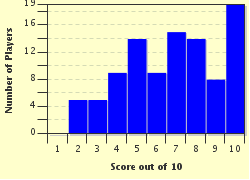Quiz Answer Key and Fun Facts
1. Here is the flag for the Electorate of Saxony, which contains the banner of the House of Wettin, a black and yellow striped background with a green crown of rue. It also contains the crossed red swords of another region, due to the Electorate having previously been a dually-named duchy. What was the progenitor of the Electorate of Saxony?
2. Pictured here is King Charles IV of Bohemia, the Holy Roman Emperor who issued a decree known as the Golden Bull of 1356 in order to strengthen his powers. This established Saxony as an official electorate which had a vote along with six others when it came to electing the Holy Roman Emperor. As quoted from the bull, the seven prince-electors came to be "Three prelates [who] are arch-chancellors of Germany, Gaul, and Italy respectively, the Bohemian cupbearer, the Palatine seneschal, Saxony marshal, and Brandenburg chamberlain."
Which of the following was NOT one of Saxony's fellow electorates?
3. This parchment drawing from the fourteenth century shows the seven prince-electors that were charged with the power to elect the Holy Roman Emperor, giving them significant influence over the other countries and principalities within the group. You can see the elector of Saxony (the third from the right). Because the position as elector was so important, it was necessary to have one legitimate prince-elector from each principality. Saxony was forced to adopt what system of male inheritance, which did not allow for a ruler's domain to be split amongst many children?
4. The House of Ascania ruled the Electorate of Saxony until 1422, when Albert the Poor, who had inherited a nearly bankrupt state, died after being exposed to a house fire. The Ascanian line (which includes Russia's Catherine the Great) held which of the following nearby possessions until 1918? (It is also part of the name of a current German state.)
5. After the Ascanian line was ended, the House of Wettin gained control over the Electorate of Saxony, uniting it with Thuringia and Meissen in 1423. However, this united realm didn't last long, as in 1464 two of the Wettin heirs fought over the electorship and split the domain in two. Represented by the light orange and dark orange respectively, what are the names of the Wettin branches that resulted?
6. In 1517, this man posted a call for a "disputatio" on the doors of the Castle Church within the Electorate of Saxony. He was then protected by Saxon rulers against Catholic ire. Who is he?
7. This awesome painting contains some pretty immodest braggadocio, as Charles V, the Holy Roman Emperor is sitting confidently above all his defeated enemies. These include (starting from the left): Suleiman I, Pope Clement VII, Francis I of France, the Duke of Cleves, the Duke of Saxony, and Philip I of Hesse. Due to what conflict was the Duke of Saxony one of the losers in the painting?
8. The Thirty Years' War wrecked Europe financially, and though Saxony was at first reluctant to join the war, it was dragged into it like most other countries at the time. It was only after the forces of the Holy Roman Empire entered Saxony that the elector, John George I, backed what Swedish king pictured here?
9. This is the coat of arms of Augustus II the Strong of Saxony, and as you can see upon closer inspection, it bears the emblem of the Electorate of Saxony. Augustus converted back to Catholicism in 1697, worrying the Saxon Protestants. The conversion was seen as a ploy to be eligible for Augustus' claim to what throne (you can see its emblem as well)?
10. The Electorate of Saxony ceased to exist when it joined in Napoleon's war effort against Prussia. In return, Napoleon allowed the electorate to become the Kingdom of Saxony. What group composed of German states (as seen in the map here) did Saxony join to make this newly-formed kingdom possible?
Source: Author
trident
This quiz was reviewed by FunTrivia editor
bloomsby before going online.
Any errors found in FunTrivia content are routinely corrected through our feedback system.

